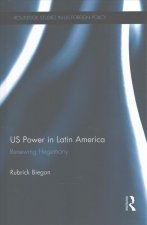
Kod: 15530542
Global Logistic Chain Security
Autor World Customs Organisation
The '100% scanning' law, or House Resolution 1 (H.R. 1), aims to protect US territory against terrorist risks likely to affect the global logistic chain. A unilateral step, it may be perceived as a disguised protectionist measure ... więcej
- Język:
 Angielski
Angielski - Oprawa: Miękka
- Liczba stron: 215
Wydawca: WORLD CUSTOMS ORGN, 2008
- Więcej informacji o książce

Zobacz książki o podobnej tematyce
-

Ursula's Pocket Posh Journal, Mum
7.74 € -24 % -

US Power in Latin America
191.20 € -

TWENTY CENTURIES OF ENGLISH HISTORY
36.62 € -

RIGBY PM COLL
429.71 € -

Voyages Et Aventures, Geneve
21.43 € -2 % -

Kritische Grundlegung der Volkswirtschaftslehre
46.69 € -6 % -

Anatomie menschlicher Embryonen
22.63 € -7 %
Podaruj tę książkę jeszcze dziś
- Zamów książkę i wybierz "Wyślij jako prezent".
- Natychmiast wyślemy Ci bon podarunkowy, który możesz przekazać adresatowi prezentu.
- Książka zostanie wysłana do adresata, a Ty o nic nie musisz się martwić.
Więcej informacji o Global Logistic Chain Security
Za ten zakup dostaniesz 87 punkty
 Opis
Opis
The '100% scanning' law, or House Resolution 1 (H.R. 1), aims to protect US territory against terrorist risks likely to affect the global logistic chain. A unilateral step, it may be perceived as a disguised protectionist measure which would transfer the risk of 'seacurity' to its partners, particularly if the principle of reciprocity does not apply.In this changing economic (over 325 million containers handled, under 0.5% of which are currently scanned) and regulatory context (following the SAFE framework of standards developed by the World Customs Organization), this forward-looking work parts from a single hypothesis: what will happen if the US 100% scanning law adopted by Congress in July 2007 actually enters into application on 1 July 2012, or even sooner should there be an attack in the United States, and what are the alternatives?The analysis is divided into three sections:- the first examines the macro-economic impacts of this law, in other words analyzing the dynamics of trade flows from the key US partners (with the aid of maps). The facts speak for themselves: of the 18 million containers arriving in the 13 biggest US ports in 2006, half came from China (and 75% from Asia). Four different potential scenarios are therefore developed showing that this share should at least be maintained in 2012 (lowest hypothesis, peaking in 2009) or even reach 78% (highest hypothesis, if the dynamics of the past decade continue). Whatever happens, Asia's share is set to oscillate between 80 and 92%, pointing to the likely appearance of interconnected global megaports as a result (polarization);- the second part assesses the micro-economic impacts, i.e. the structure and dynamics of the scanning sector globally. The new strategies of the key actors, both big manufacturers (Smiths Detection, Nuctech and SAIC) which account for 80% of the 1,250 scanners currently operational throughout the world, and administrators (Customs, of course, but also the three big private enterprises (Cotecna, SGS and Bureau Veritas)), are therefore analyzed. They are put into perspective with the aid of a 6-section, 60-question standard questionnaire put in situ to port and customs authorities in 10 ports worldwide, ranging from major ports such as Singapore and Dubai to medium-sized ports such as Abidjan and Montevideo, and giving an approximate initial assessment of the unit cost of a scanned container. This invaluable collection of information is combined with a number of interviews taking in several key international organizations (European Commission, World Bank and UNCTAD), and has been benchmarked against the Channel Tunnel and the aviation sector, which witnessed the same revolution just a decade ago;- finally, the third section attempts to construct different potential scenarios ranging from the status quo (no port in the world will be capable of scanning 100% of containers by 2012) to networking (a significant proportion of ports, in the tradition of the Southampton pilot project, will validate the technological 'protocol' and manage to make the logistic 'leap'). This section touches on the positions of the developed and developing countries, and of course possible alternatives to the H.R. 1 law."This pioneering book is essential reading for all in the maritime industry as well as governments and international agencies that will have to address the issues in the coming years" (Brian Slack, Preface).
 Szczegóły książki
Szczegóły książki
34.71 €
- Pełny tytuł: Global Logistic Chain Security
- Autor: World Customs Organisation
- Język:
 Angielski
Angielski - Oprawa: Miękka
- Liczba stron: 215
- EAN: 9782847690965
- ISBN: 2847690964
- ID: 15530542
- Wydawca: WORLD CUSTOMS ORGN
- Waga: 395 g
- Wymiary: 240 × 154 × 14 mm
- Data wydania: June 2008
Ulubione w innej kategorii
-

Berserk Deluxe Volume 1
47.99 € -28 % -

Cry Baby Coloring Book
9.85 € -12 % -

Berserk Deluxe Volume 2
52.22 € -

Haunting Adeline
30.78 € -

Hunting Adeline
31.79 € -

Reckless
10.25 € -20 % -

Powerless
11.97 € -6 % -

The Official Stardew Valley Cookbook
21.83 € -24 % -

Berserk Deluxe Volume 4
46.58 € -7 % -

White Nights
3.51 € -

Berserk Deluxe Volume 3
48.90 € -2 % -

Berserk Deluxe Volume 5
50.51 € -

Gravity Falls Journal 3
18.31 € -13 % -

BALLAD OF SWORD & WINE QIANG JIN JIU V01
17 € -18 % -

Atomic Habits
16.19 € -29 % -

Iron Flame
16.19 € -24 % -

Chainsaw Man, Vol. 15
10.36 € -19 % -

No Longer Human
13.48 € -16 % -

JUJUTSU KAISEN V22
10.56 € -18 % -

The 48 Laws of Power
24.55 € -8 % -

Surrounded by Idiots
10.76 € -9 % -

Twisted Lies
9.75 € -17 % -

Berserk Deluxe Volume 6
51.11 € -

Court of Thorns and Roses Paperback Box Set (5 books)
50.11 € -19 % -

Everything I Know About Love
10.36 € -29 % -

Once Upon A Broken Heart
9.85 € -23 % -

Twisted Games
9.75 € -24 % -

Heaven Official's Blessing: Tian Guan Ci Fu (Novel) Vol. 1
18.10 € -8 % -

Fourth Wing
10.25 € -20 % -

Twisted Love
9.75 € -24 % -

A Little Life
17.50 € -

Dungeons & Dragons Essentials Kit (D&d Boxed Set)
22.73 € -12 % -

Berserk Deluxe Volume 10
58.76 € -

Don't Believe Everything You Think
12.87 € -20 % -

The Courage To Be Disliked
11.06 € -6 % -

Harry Potter and the Prisoner of Azkaban (Minalima Edition)
30.68 € -24 % -

Court of Thorns and Roses
9.25 € -21 % -

Bungo Stray Dogs, Vol. 8 (light novel)
16.59 € -2 % -

Golden Terrace: Volume 2
13.98 € -33 % -

Golden Terrace: Volume 1
15.89 € -24 % -

Bridgerton: The Duke and I
10.15 € -29 % -

Howl's Moving Castle
8.04 € -26 % -

Heaven Official's Blessing: Tian Guan Ci Fu (Novel) Vol. 5
17.40 € -12 % -

Twisted Hate
10.15 € -20 % -

Berserk Deluxe Volume 7
48.09 € -4 % -

Court of Mist and Fury
9.95 € -16 % -

Percy Jackson and the Olympians 5 Book Paperback Boxed Set
36.42 € -19 % -

Berserk Deluxe Volume 8
51.21 € -

The Husky and His White Cat Shizun: Erha He Ta de Bai Mao Shizun (Novel) Vol. 5
20.22 € -1 %
Osobní odběr Bratislava a 2642 dalších
Copyright ©2008-24 najlacnejsie-knihy.sk Wszelkie prawa zastrzeżonePrywatnieCookies



 Vrácení do měsíce
Vrácení do měsíce Zdarma od 49.99 €
Zdarma od 49.99 € 02/210 210 99 (8-15.30h)
02/210 210 99 (8-15.30h)